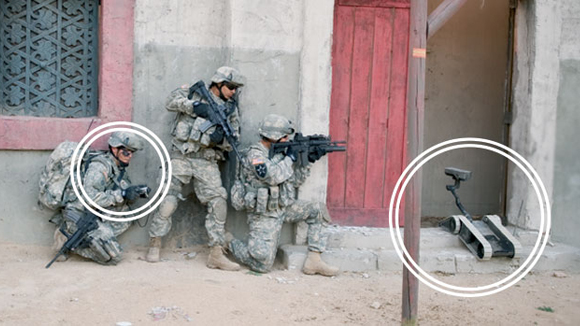Telepresence: Rise of the telerobots
Teleportation may not exist yet, but perhaps telepresence will do for now

Yahoo's new CEO, Marissa Mayer, has caused a storm by ordering an end to telecommuting, but the move flies in the face of a global trend that's separating working from a physical workplace versus working from elsewhere.
At the cutting edge of this trend are telepresence robots, which effectively become your eyes and ears while you're located elsewhere, pulling the strings from your computer.
They're starting to show up everywhere you're not and a number of manufacturers are already heavily invested in telerobot production in a variety of form factors.
Tall, standalone and mobile machines, plus more desktop-restricted models are already available.
Robots on the job
Perhaps nowhere will the telepresence impact be felt more than in the workplace, where every day thousands of people already remotely log in to the daily grind.
Telecommuting (or 'telework') in Australia is already hugely popular and the federal government is aiming to boost it further, with a stated goal of having some 12% of Australian employees enjoying a 'telework arrangement with their employers'.
Inevitably, these interactions will involve telepresence robots, who will help to bridge the physical gap between the remotely logged-in home (or field) worker and their colleagues back in the office.
Sign up for breaking news, reviews, opinion, top tech deals, and more.

The Beam Remote Presence System is a good example.
Launched late last year in the US, it might look like a PC monitor on a tall stand, but it's a full, roaming digital replicant of you.
Two wide-angle cameras help you steer it around the office at a walking speed of 1.5m per second.
The display is a 17-inch screen, so your face appears at the right size, while six mics help you hear what's happening and built-in speakers project your own voice back.
Basically, the Beam is designed to let you move freely around the office and engage with co-workers as if you were there.
The client software to remotely control the device is available for both Windows and Mac, and when you're done with work for the day you can simply park the Beam in its charging dock and log out.
Just don't expect industrial-grade telerobots to come cheap: the Beam currently retails for US$16,000. Lucky that work's paying, right?

In the medical field
Medical services are another area where telepresence robots are expected to play an increasingly important role, enabling hospital staff and professional carers to look after patients and convalescents with greater ease and efficiency.
One of the more notable examples is the RP-VITA, developed in partnership by InTouch Health and iRobot, which makes consumer robotics gear including the Roomba vacuum cleaner.
The RP-VITA, which was cleared for use in US hospitals in January, can navigate to wherever it's sent on the hospital floor (avoiding obstacles and medical staff en route) and at its destination enables physicians to remotely oversee patients.
Doctors can control the RP-VITA from the other end using an iPad app, which lets them access clinical data such as patient records and connect to digital diagnostic tools.

Danger, Will Robinson!
While much of the attention around telepresence focuses on the sheer efficiency of putting a robotic replicant where you could be if you otherwise had the time, one path of the technology diverges sharply from the rest: exploration, security and emergency response robots. These can be sent into places that are deemed too unsafe for humans to tread.
In the wake of the nuclear meltdowns at the Fukushima Daiichi power plant in Japan in 2011, numerous Japanese companies including Toshiba, Mitsubishi and Hitachi have concentrated efforts on making robots capable of exploring and cleaning up radioactive areas of the plant, which human workers can't safely visit.
The most recent of these, Mitsubishi's radiation-resistant MHI-MEISTeR, weighs some 440kg and is capable of operating a number of different power tools in its high-impact duties, while its operators control the device from a safe distance.